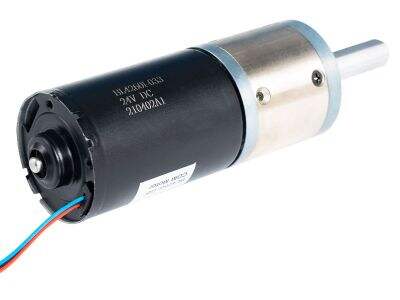Sensor less BLDC control is a technology that’s improving consumer devices. It simplifies system, easier to use and more reliable. CDM feels that is the technology for Tomorows consumer electronics.
Benefits of Sensor less BLDC Control in Consumer Applications
There are several advantages to sensor less BLDC control for consumer applications. One benefit is that there’s no requirement for additional sensors, saving space and keeping costs down. That makes devices smaller and therefore cheaper for the consumer. Moreover, sensor less control is more robust since there are less parts that can be damaged or defective. This way, consumer appliances last longer before needing to be fixed. CDM has experienced first-hand how sensor less BLDC control can enhance consumer devices, rendering them more efficient and easy to use.
Advantages of Sensor less BLDC Control in Bulk Electronics
Sensor less BLDC control can offer considerable advantages in wholesale electronics. For instance, product design is more flexible when the technology can respond to varying circumstances without requiring extra sensors. And that also means that wholesalers can use a greater variety of products to fulfil the various requirements of theirs customers. Also, sensor less BLDC control is a means of enhancing the utility level of wholesale electronics by decreasing the probability for accessory breakdown. This can result in much higher customer and for wholesalers sales potential. Wholesalers have partnered with CDM to integrate bldc brushless dc motor control in their products, and the solutions showed enhanced service and customer satisfaction.
Optimizing Efficiency with Sensor less BLDC Control
The completely new technology of sensor less BLDC control has changed the way that consumer products work. Without requiring sensors, this control system simplifies the system as a whole and improves both efficiency and reliability. In conventional BLDC systems, the rotor is sensed and fed back to the controller through sensors. Unfortunately, these sensors could be expensive, large and sensitive to failure. Sensor less BLDC control employs sophisticated algorithms to obtain the rotor position using back EMF of the motor. This not only makes system design less complicated but also enhances the system performance by not calibrating and maintaining any sensor.
A Game-Changer for Consumer Devices
Sensor less BLDC control is a win for consumer devices like home appliances, power tools and EVs. Simplifying the complexity of systems and increasing efficiency, this technology enables manufacturers to develop more reliable and affordable products. With respect to the household appliances, a brushless dc motor with encoder provides operations with lower noise, longer life and less energy consumption. In power tools, this can mean better control and higher torque at lower speeds. In an electric vehicle, it can extend range and lower maintenance costs. All things considered, sensor less BLDC control is leading the consumer electronics industry into a new era of creative design and performance that makes for happier customers.
Typical Problems Solved by Sensor less BLDC Control Technology It is not possible to detect sensor fault for simple commutation sensors
Comments Sensor less BLDC control technology eliminates many of the problems faced by consumer product manufacturers. One of the primary difficulties is the high cost and complexity of sensor-based solution. Without the need for sensors, senso rless BLDC control reduces cost and design overhead. The bldc dc motor reliability of the sensor-based system is another problem, because sensors can be out of order after a period of time and need to be calibrated frequently. Sensor less BLDC control is a more durable and maintenance-free solution, while increasing system reliability. Furthermore, sensor less BLDC control increases performance by maximizing motor efficiency and minimizing energy consumption. This is not only advantageous for customers as the end-users will have a better user experience, but also essential for manufacturers to meet energy efficiency legislation and standards.
Table of Contents
- Benefits of Sensor less BLDC Control in Consumer Applications
- Advantages of Sensor less BLDC Control in Bulk Electronics
- Optimizing Efficiency with Sensor less BLDC Control
- A Game-Changer for Consumer Devices
- Typical Problems Solved by Sensor less BLDC Control Technology It is not possible to detect sensor fault for simple commutation sensors

